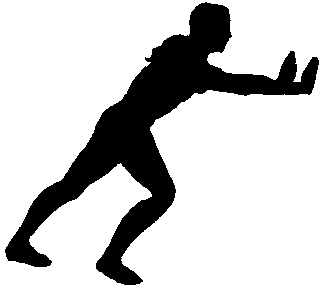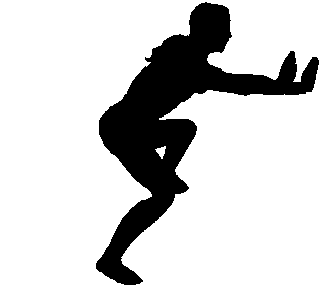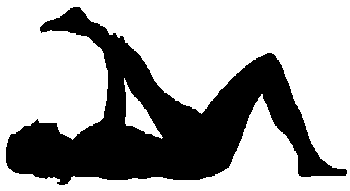Flexibility
 "Stretching
reduces cramping, sprains and strains. And better flexibility
delivers a more aerodynamic tuck and a longer
stroke. "
"Stretching
reduces cramping, sprains and strains. And better flexibility
delivers a more aerodynamic tuck and a longer
stroke. "
Besides improving your flexibility, stretching also makes your entire skeletal structure more stable. To ice the cake, stretching can reduce painful, post-workout muscle soreness. And when you are training for a marathon, less soreness is a good thing! Beware, though: stretching can actually be harmful if you do it cold, especially if you try to force the move or bounce a stretch. Warming up literally raises the temperature in your muscles, stimulates your nervous system and lubricates your joints for maximum flexibility.
A half-hour skate training session will warm you up just fine for stretching, but that work also tightens your muscles, all the more reason to work on loosening them up! On skate days, arrange to have a comfortable stretching spot right next to where you will be removing your skates. For some, that may mean keeping a yoga mat or throw rug in the car.
What should you stretch? At a minimum, loosen up your hips, thighs, calves, and lower back, preferably before and after you skate. If you have time, add in head tilts, shoulder shrugs, arm circles, side bends and ankle rotations. Be careful to perform these stretches without bouncing, which is likely to prolong the muscle’s protective contraction and can also cause tiny tears in the tissue.
Lessons
Beginner
Arrange your body in the stretch positions illustrated below. Inhale and then, as you exhale, begin to apply resistance (by pulling with your hands or using gravity or body weight). Count slowly to five, emptying your lungs by compressing your belly.
Near the end of this first exhalation, you should be feeling a slight give in the stretching muscles. This is the point at which the muscle fibers release their protective reflex (usually 15 – 30 seconds), and a signal that you can now begin work to elongate them. Take another deep breath and slowly exhale again, gently increasing the resistance. Follow the same instructions for each stretch illustrated.
 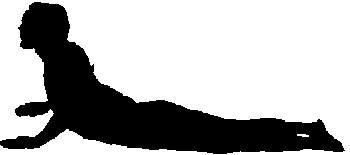
|
|
Intermediate
A new stretching trend called Active Isolated (AI) stretching is still relatively unknown outside the running community. AI stretching incorporates three principles:
- Ease into and hold the stretch no more than 2 seconds. This prevents your body's protective stretch reflex from contracting the muscle you are trying to lengthen. (And by not bouncing the stretch, you protect your connective tissue from the risk of micro tears.)
- As you stretch to lengthen a muscle, contract its opposing muscle group (more details below).
- Use body weight, gravity, or a strap around the limb to gently increase the stretch.
Use the stretches below as your post-skate (or other aerobic exercise) cool-down. Inhale as you stretch to a point of noticeable pressure (but not pain) and hold 2 seconds, then exhale and relax for 2 seconds. Repeat the AI stretch 4 times.
Lengthen |
Contract |
Illustration |
Increase the stretch by: |
back of spine |
abdomen |
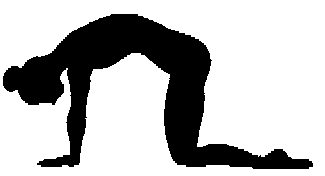
|
abdominal contraction |
front spine, abdomen |
spinal muscles |
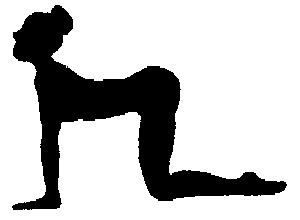
|
spinal contraction |
hamstrings |
quadriceps |
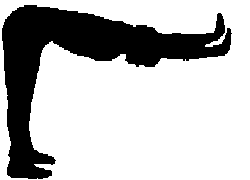
|
tilting tailbone up (spinal contraction) |
low back, hips |
lower abs |
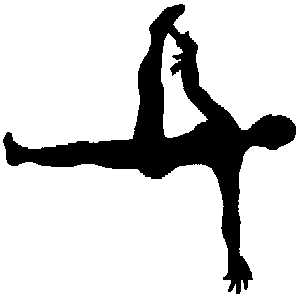
|
pulling strap upwards |
waist, low back |
lower abs |
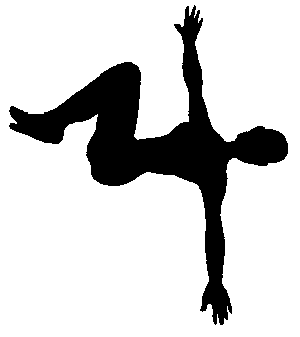
|
press down with hand on top knee |
ankles, groins |
quads |

|
hands on ankles |
hip flexors |
gluteus, abs |
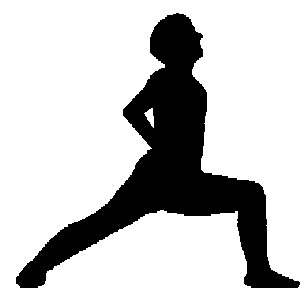
|
lunging deeper |
quadriceps |
hamstring |

|
tilting pubic bone forward |
Advanced
Training to become competitive with the fastest marathon skaters will make you extremely fit. But as you make increasingly greater demands on your body, you are going to experience stiff, sore muscles. This pain is caused by lactic acid buildup, minor tissue damage and occasionally, muscle spasms.
After a hard workout, massage can speed up the rebuilding process by reducing muscle spasms and tension. A massage also increases blood and lymph circulation, which helps get rid of waste products. This makes your tissues more elastic and flexible, helping you feel better and making your body less prone to injury. Besides the physical benefits, a massage can give you a calmer, clearer mind, a definite mind-body connection.
Do not think of massage as a luxury, but rather the occasional necessity to maintain an athletic lifestyle. Dan always takes advantage of the massages offered to cyclists at the 100- and 200-mile fund-raising events he attends. Whenever we are lucky enough to take an extended ski vacation, we always schedule a mid-week massage for each of us to make sure we get to do all the sking we want.
Find a certified massage therapist who does the type of massages that suit your body best. One may be closer than you think if you belong to a gym or regularly visit a chiropractic or physical therapy center. When speaking to the therapist, describe your training routine and fitness goals to determine the best type of massage for you. To make the best use of your time on the table:
- Ask for extra attention for your low back, thighs, calves and feet.
- Keep chatting to a minimum. Instead, pay attention to sensations such as increased heat, tightening, constricted breathing. Tell the therapist if pressure in one area sends a tingling sensation to another.
The probing fingers of a trained massage therapist can detect much about what is going on with your joints, muscles and tendons. Be open to any suggestions about stretching, training or other ways to take better care of yourself. Schedule a weekly visit if that feels right. After a massage, drink lots of water to help flush your system of the waste products it has released.
